#national art museum of ukraine
Text

Davyd Burliuk's Carousel, 1921
© The Burliuk Foundation
0 notes
Text

Ukrainian Folk Dance, Teodor Axentowicz, 1895
#art#art history#Teodor Axentowicz#genre painting#Ukraine#Polish art#Polish-Armenian art#19th century art#oil on canvas#National Museum in Warsaw
530 notes
·
View notes
Photo
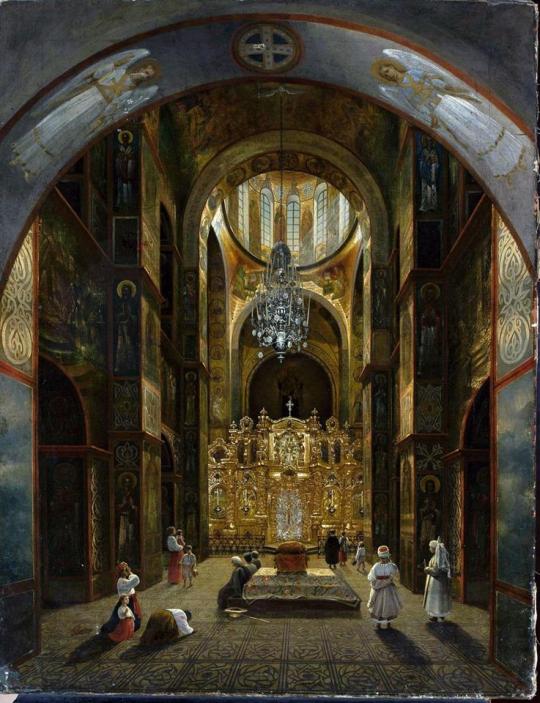
Interior of The St.Sophia`s Cathedral in Kyiv by Mykhailo Sazhyn, 1854
#The National Museum in Warsaw#Saint Sophia`s Cathedral#interior#Kyiv#ukrainian art#Ukraine#1850s#St.Sophia`s Cathedral#Ukrainian Architecture
265 notes
·
View notes
Text
National Art Museum of Ukraine

Kyiv.1911 y.
#ukraine#war in ukraine#old photography#postcard#old postcards#vintage postcard#vintage photography#Kyiv#National Art Museum#archive#archive photos#1911#ukrainian architecture#architecture
100 notes
·
View notes
Photo

Ilinden / Makedonium – A Monument Dedicated To The Fighters And Revolutionaries Who Participated In The Ilinden Uprising Of 1903
Revitalizing The Heritage Of Socialist Modernism: BACU’s Online Initiative To Protect Central And Eastern European Architecture
Preserving the monumental yet decaying structures of central and eastern Europe erected between 1955-91 is the mission of the online initiative, Socialist Modernism, created by the Bureau for Art and Urban Research (BACU). With an aim to revitalize this heritage, BACU believes in the significance of these elements which managed to defy some of the ideological requirements of their time, giving the urban space a distinct flavor characteristic of the socialist period.
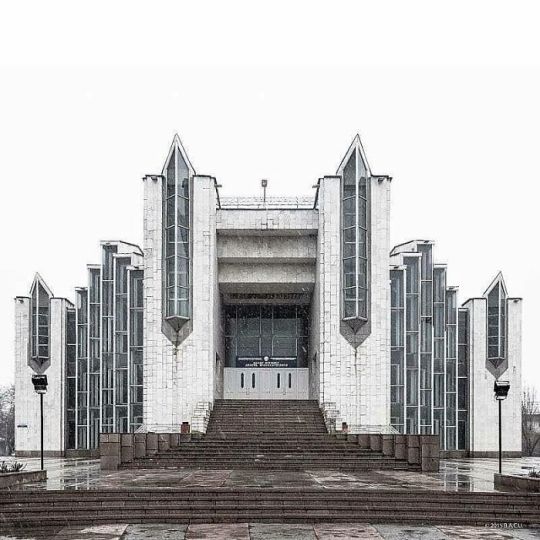
Palace Of Weddings, Bishkek, Kyrgyzstan, Built In 1987
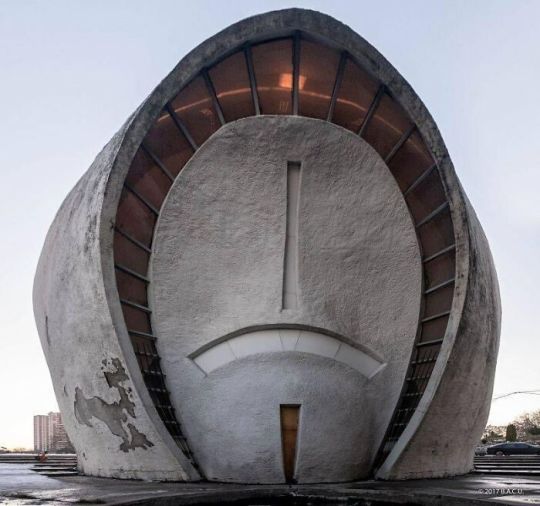
One Of The Two Halls Of Parting, Memory Park (Kyiv/Kiev) Ukraine. Built 1968–1981
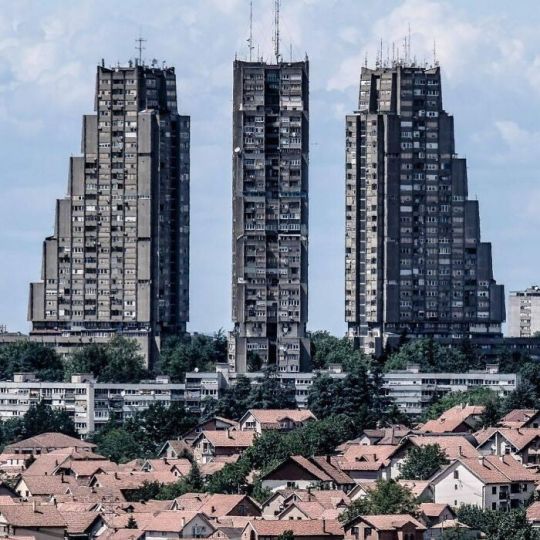
Eastern Gate Of Belgrade, Rudo Buildings, (Istočne Kapije) Belgrade, Serbia, Built In 1976, Architect: Vera Ćirković Engineer: Milutin Jerotijević
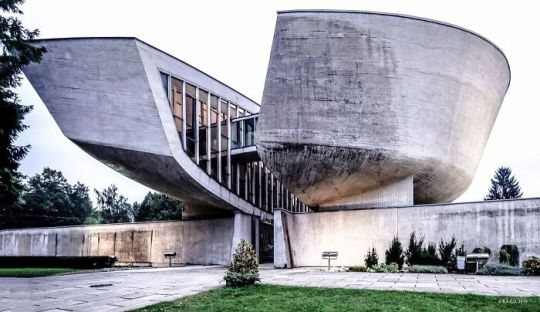
Museum Of The Slovak National Uprising, Banska Bystrica, Slovakia, Built In 1969
#socialist modernism#bureau for art and urban research (bacu)#central and eastern european architecture#architecture#history#socialism#heritage#ilinden uprising#palace of weddings#bishket#kyrgyzstan#halls of parting#memory park#kyiv#kiev#ukraine#belgrade#servia#museum of the slovak national uprising#banska bystrica#slovakia
5 notes
·
View notes
Text



Not so long ago I was at an exhibition of African art. This is impressive, I think many artists of modern games, comics and other works in the fantasy genre were inspired by this, because you look at these totems, masks and costumes and think that somewhere I have already seen it)
#art#my art#ukraine art#african culture#africa#clothes#shellfish#masks#costume#The National Museum in Szczecin on Wały Chrobrego#illustration#fotos#укртумбочка#укртамблер#український тамблер#украрт
7 notes
·
View notes
Text

The Morning after...
Meanwhile, the war in Ukraine hasn't vanished. Once again we spent last night in the corridor, away from the windows and the shattering glass. The historic centre of Odesa, where I live, is covered with scars that are getting bigger and bigger. The Odesa National Fine Arts Museum, a cosy art gallery, which turns 124 years old today, was attacked by russian missiles and shaheds.
There is pain and wrath instead of celebration. And the best antidepressant for me - a walk in the park on a sunny November day.
#photographers on tumblr#original photographers#original photography on tumblr#ukraine#artists on tumblr#photo#original photography#art#original phography#original photography blog#photography#photographer#Одеса#Україна#war in ukraine#naturephotography#nature colors#nature#light#autumn atmosphere#autumn#autumm#leaves#autumnal#fall#trees#tree#sky#november
1K notes
·
View notes
Text

Fedir Krychevsky (Ukrainian, 1879–1947)
"The Bride", 1910
National Art Museum of Ukraine, on loan to the Belvedere Museum (Vienna)
406 notes
·
View notes
Text

Vasily Wilhelm Alexandrovich Kotarbiński (Polish-Russian, 1849-1921)
Prayer for the cup, n.d.
Kyiv National Museum of Russian Art, Ukraine
“Father, if you are willing, please take this cup of suffering away from me. Yet I want your will to be done, not mine” (Luke 22:42). - The Bible
#Vasily Wilhelm Alexandrovich Kotarbiński#polish art#polish#russian art#russian#russia#christian art#christianity#christentum#catholic#lutheran#anglican#roman catholic#orthodox#jesus christ#catholic art#poland#art#fine art#fine arts#classic art#painting#artwork#1800s
770 notes
·
View notes
Text
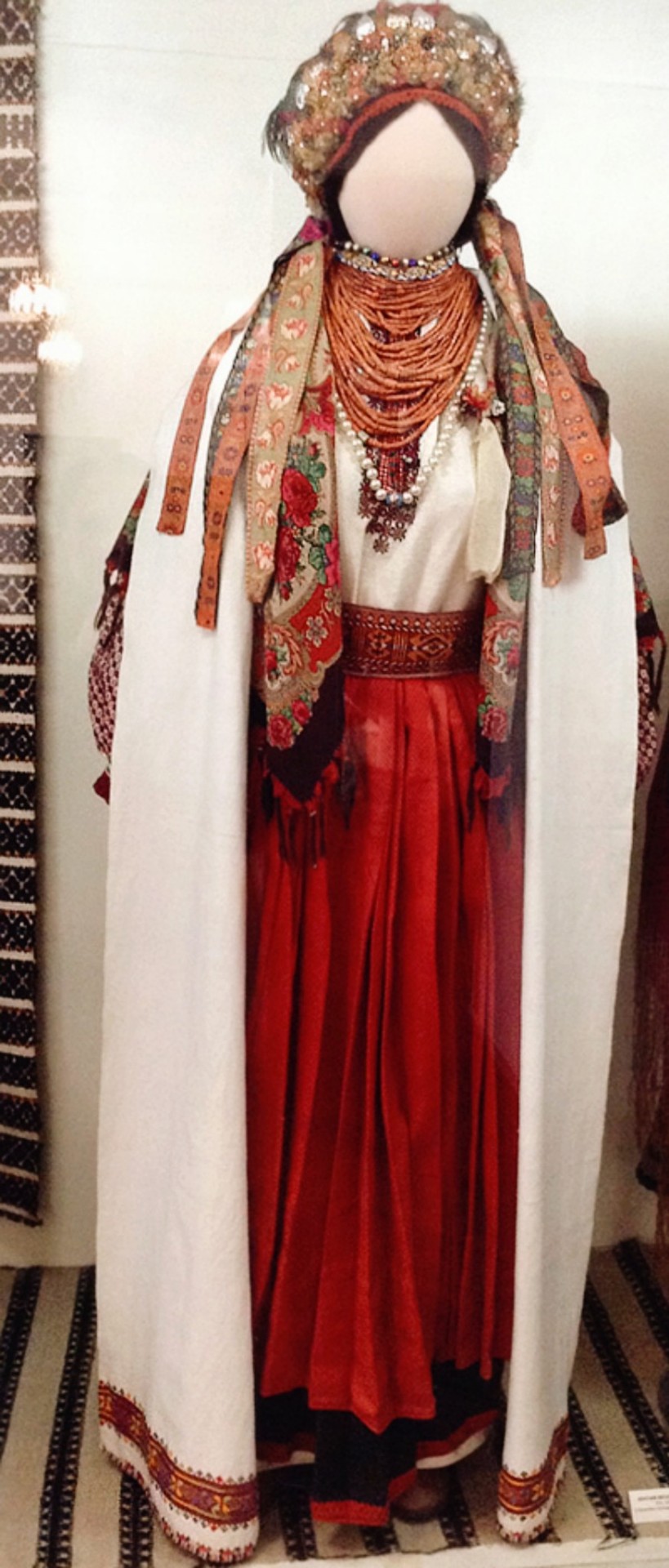
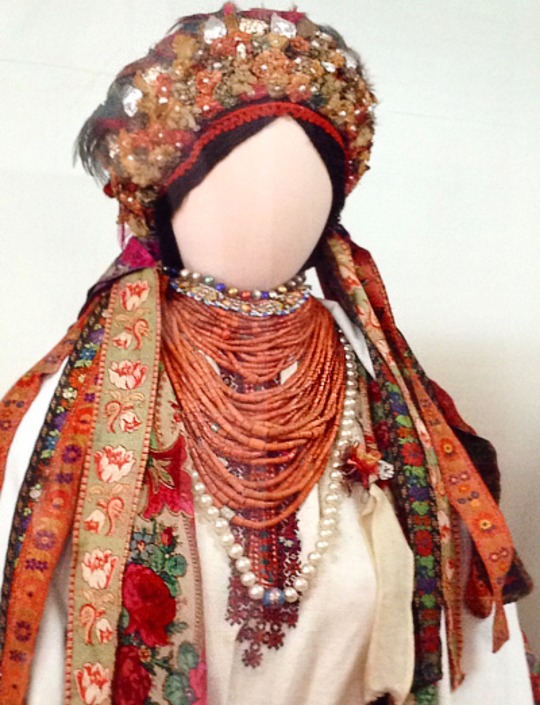
Ukrainian wedding dress from Ivano-Frankivs'k Oblast', early 20th century.
National Museum of Hutsul and Pokuttya Folk Art in Kolomyia, Ukraine.
1K notes
·
View notes
Text
There are three types of Ukrainian artists. Those who were killed by russia, those who were repressed by russia and those whose legacy was stolen by russia. Armenian-Ukrainian artist Ivan Aivazovsky belongs to the third category. So here I present 6 fun facts about his life.
••••••••••••••••••••••••••••••••••
1. For almost an entire life he lived in the city of Feodosia in Crimea. He loved the city and was its patron, he financed museums, galleries and the development of the city.
For example, when the ancient Armenian church of Surb-Sarkis burned down, the restoration was carried out at the personal expense of Ivan Aivazovsky. From year to year, the painter donated the author's icons to the Church of St. Sergius - "Walking on Water" (1888; oil on canvas, 70 x 50), "The Last Supper" (1890; oil on canvas, 44 x 60), "The Virgin and Child ” (1891; oil on canvas; 125 x 103 cm), “Prayer for the Chalice” (1897; oil on canvas; 94 x 72).

Feodosia. Moonlit night, Ivan Aivazovsky, 1852, 29x36cm, oil on canvas, private collection
••••••••••••••••••••••••••••••••••
2. History and archeology were his huge hobbies. He even participated in archeological digs. Though he hated reading.

Chumaks leisure, Ivan Aivazovsky, 1885, oil on canvas, Belarusian National Arts Museum
••••••••••••••••••••••••••••••••••
3. He created his marine landscapes not on the coast but in his workshop from memory.

The Ninth Wave, Ivan Aivazovsky, 1850, 221x322cm, oil on canvas, State russian museum
••••••••••••••••••••••••••••••••••
4. He was the first Ukrainian artist to be exhibited in the Louvre.

View of the island of Capri, Ivan Aivazovsky, 1845, 40x57cm, oil on canvas, Kyiv National Art Gallery
••••••••••••••••••••••••••••••••••
5. Pope Gregory XVI (Gregorius PP. XVI; 1765-1846) unexpectedly wished to purchase a painting by an artist from Feodosia for the Vatican. So, at the beginning of 1841, the marinist repeated the seascape in his own way and, kneeling down, personally presented it to the Pontiff. Touched by the artist's noble gesture, in the late autumn of 1841, the governor of St. Peter personally awarded the Ukrainian Armenian with the Order of St. Sylvester and the Golden Militia.

Chaos. Creation of the world, Ivan Aivazovsky, 1841
••••••••••••••••••••••••••••••••••
In 2023, during the bloody occupation of the Ukrainian city of Kherson by russians, not only were thousands of civilians tortured and killed, but numerous museums were also robbed. Three paintings by Ivan Aivazovsky were stolen from the Kherson National Museum of Art, along with thousands of artefacts from all over the country. The stolen paintings are: "The Storm Subsides," "The Sea," and "View of the City of Odesa." Reminder: Such actions are a direct violation of the Geneva Conventions.
Support Ukraine!

In Ukrainian text states: STOLEN! Ivan Aivazovsky, View of the City of Odesa, oil on canvas
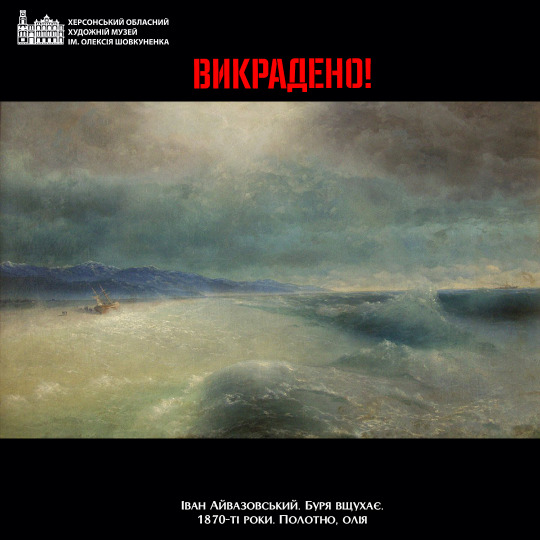
In Ukrainian text states: STOLEN! Ivan Aivazovsky, The Storm Subsides, oil on canvas
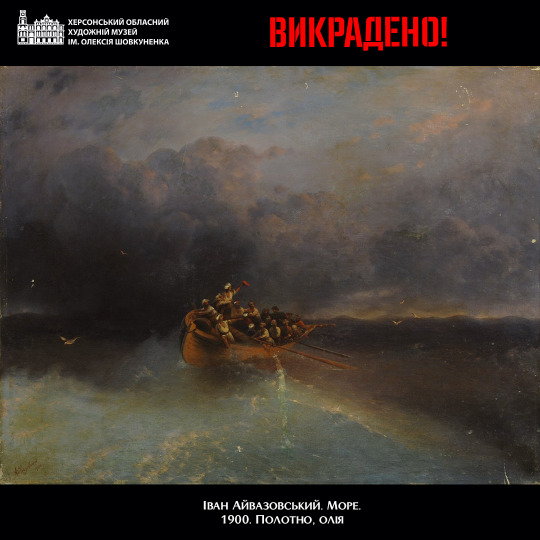
In Ukrainian text states: STOLEN! Ivan Aivazovsky, The Sea, oil on canvas
#art#art history#painting#artwork#museum#sea#ivan aivazovsky#ukrainian art#ukraine#support ukraine#russia is a terrorist state
223 notes
·
View notes
Text
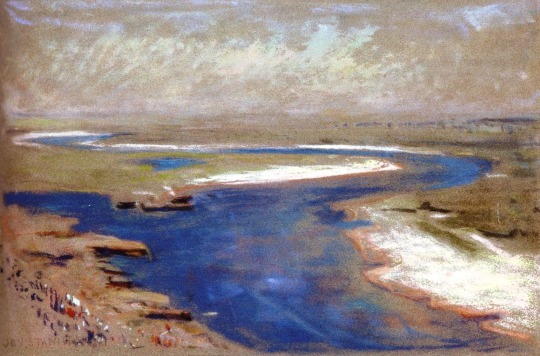

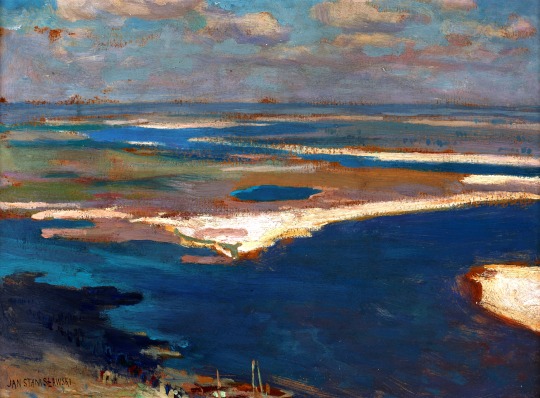
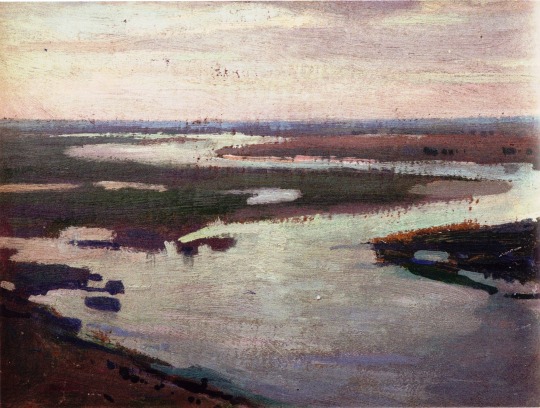
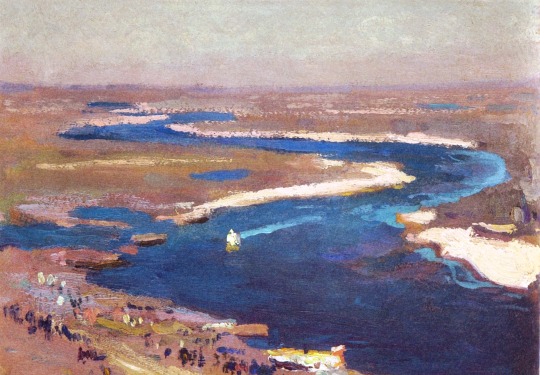
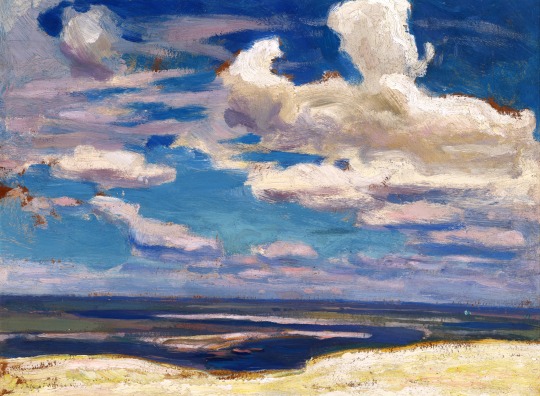
The Dnieper by Jan Stanisławski (1860-1907), the Polish artist, born near Korsuń (Корсунь) in Ukraine.
The Dnieper in Summer, pastels on cardboard, 34,4 cm X 51 cm (c. 1904). From a private collection.
The Dnieper, pastels on paper, 33,7 cm X 52 cm (c. 1903)
The Dnieper River in Blue, oils on cardboard, 23,8 cm X 32 cm (1904)
The Dnieper Limans at Dawn, oils on cardboard, 16,2 cm X 22,2 cm (1903)
The Sapphire Dnieper, oils on Bristol board, 16 cm X 24 cm (1904)
A Cloud over the Dnieper, oils on Bristol board, 24 cm X 32,3 cm (1903)
Paintings 2-5 are from an art collection of the National Museum in Kraków (Poland):
#dnieper river#ukraine#ukrainian landscape#polish art#jan stanisławski#landscape art#art#landscape painting
245 notes
·
View notes
Text

Oleksandr Bohomazov (Ukrainian, 1880-1930), Sharpening the Saws, 1927. Oil on canvas, 138 x 155 cm. National Art Museum of Ukraine, Kyiv
155 notes
·
View notes
Text
No one would call an artist from India “British” or an artist from Peru “Spanish,” so why do museums continue to label Ukrainian artists as “Russian”?
The misnomer issue is nothing new. Researchers and curators from Ukraine have been contacting institutions like the Museum of Modern Art (MoMA) and Centre Pompidou for years to ask them to acknowledge the Ukrainian descent of some of the artists in their Russian collection. These requests were mostly ignored before the full-scale Russian invasion of Ukraine in February 2022.
Ukrainian culture (and any other post-Soviet/post-Russian Empire oppressed culture, for that matter) is successfully erased from global art history. And virtually every museum collection is an example of this erasure. Ukrainian art historian Oksana Semenik, who is now studying at Rutgers University, provides more proof of that. As an assistant curator at the Zimmerli, the biggest collection of Soviet non-conformist art in the US, Semenik examined the museum archive to find out that out of 900 artists labeled “Russian,” 71 were Ukrainians, and 80 were artists of other nationalities like Belarusian, Latvian, Lithuanian, etc. “About 15% of the ‘Russian’ collection is misidentified. But when I asked if this could be changed, the response was: The identity question is not relevant these days,” Semenik said.
If this question is irrelevant, then why does “Russian” remain? “Some curators told me that using Ukraine in the caption is incorrect since there was no such country at that time,” Semenik continued. She also checked the online archive of the Smithsonian Institution and found 42 Ukrainian artists labeled “born Kharkov, Russia” or “born Odessa, Russia,” among other examples. In fact, a country called “Russia” did not exist before 1991, either. But the problem is bigger here — attributing Ukrainian cities to Russia, especially in the current context, rings like blatant Kremlin propaganda.
To be unable to recognize the difference between the Russian Empire, the Soviet Union, and the Russian Federation or Russia is a shameful mistake for institutions whose archives are used as credible academic sources. “It’s tough to acknowledge that the history Western art historians were learning for years, all those tons of books about Malevych and the Russian avant-garde, were part of the Russian propaganda,” Semenik added.
#ukraine#russia#art#russian culture#russian art#ukrainian culture#ukrainian art#cultural appropriation#decolonisation#colonialism
462 notes
·
View notes
Photo
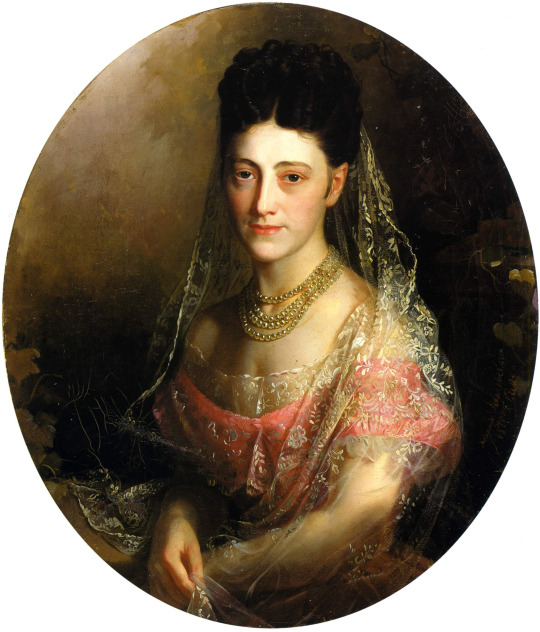
1870 Afanasiy Rokachevsky - Portrait of Anna Mazevskaya (?)
(National Art Museum of Ukraine)
148 notes
·
View notes
Photo
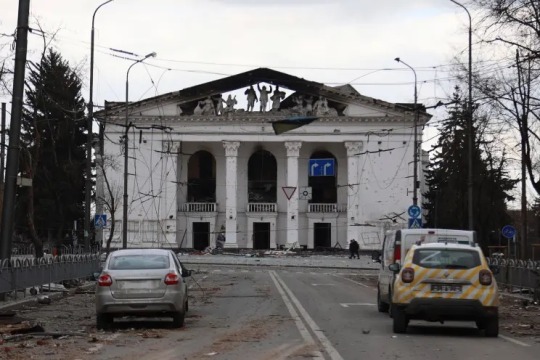

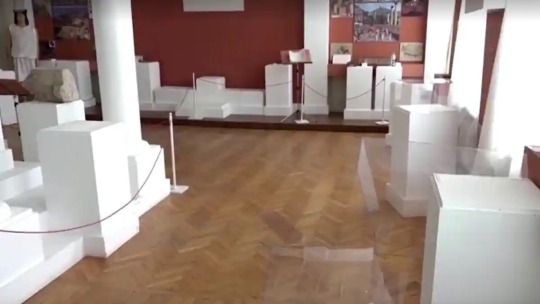
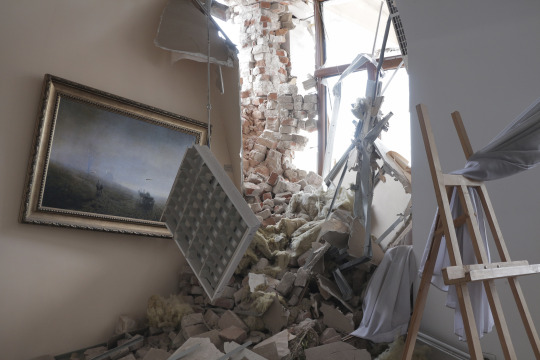


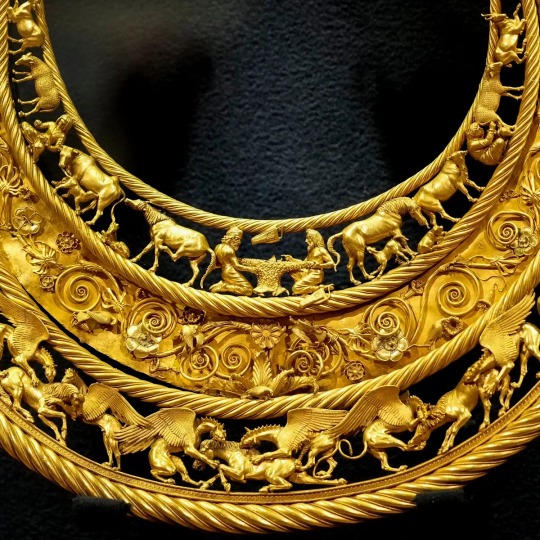



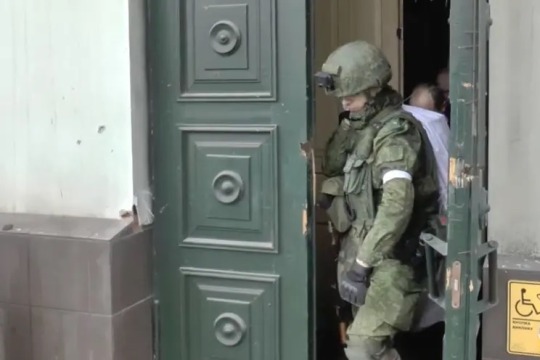
Russian Art Curators Have Helped Loot Dozens of Ukraine Museums
Russian art curators have reportedly led raids on approximately 30 Ukrainian museums since last years invasion, guiding the pilfering of ancient artifacts from the war-torn country.
Across Ukraine, museums have been looted of their famed Scythian artifacts, which were left behind when the Eastern Iranian nomadic people migrated from Central Asia to modern-day Ukraine and Southern Russia between the 7th and 3rd century BC, according to the Sunday Times of London.
The raids have reportedly led to the theft of Scythian ornaments, sculptures, paintings, icons and busts worth millions.
“The orders are coming from someone pretty high up in the Kremlin,” said Sir Antony Beevor, the historian and author of “Russia: Revolution and Civil War” told the Sunday Times. “Putin’s propaganda is that Ukraine as a country doesn’t exist, it’s part of Russia — so they can grab anything they want.”
Others see the raids as a way for Russia to wipe out Ukraine’s cultural identity.
“It’s a deliberate policy to destroy the historical memory of the Ukrainian people,” said Alexsandr Symonenko, a Ukrainian archaeologist and Scythian specialist at Ukraine’s National Academy of Sciences.
The first raid came last March, shortly after Russia’s invasion, when a curator was kidnapped and thousands of pieces of artwork were stolen during the occupation of Mariupol and Melitopol.
Russian troops stole nearly 200 items from the Museum of Local Lore in Melitopol, including multiple 2,300-year-old gold pieces from the Scythian empire, according to the Museums Association.
The objects were reportedly selected by a man in a white coat who broke into the basement of the museum with Russian soldiers and selected what to steal with “long tweezers and special gloves,” said Leila Ibrahimova, the caretaker of the museum.
The largest Russian art heist targeted the Kherson Regional Art Museum where five trucks were used to steal over 15,000 pieces of artwork.
One canvas was too large to take, so it was left at the door, and an ancient cannon was also left behind because it was too heavy to move.
“It felt like I was losing my mind, that I was in a bad dream,” said the museum director, Alina Dotsenko. “It was terribly painful to see it so empty, this museum that was my pride, my love, my life.”
By Jacob Geanous.
#Russian Art Curators Have Helped Loot Dozens of Ukraine Museums#ukraine#Kherson Regional Art Museum#russia#russian war on ukraine#russian war crimes#russian war criminals#russian terrorism#russian terrorists#art#artist#art work#art world#art news#scythian artifacts#ancient artifacts#stolen art#looted art#sad
176 notes
·
View notes